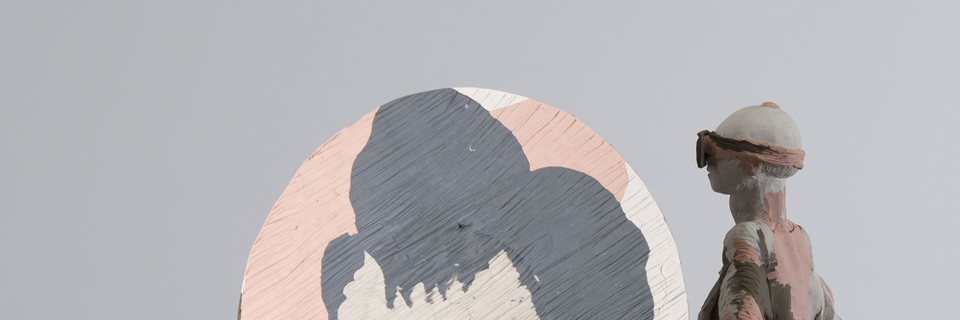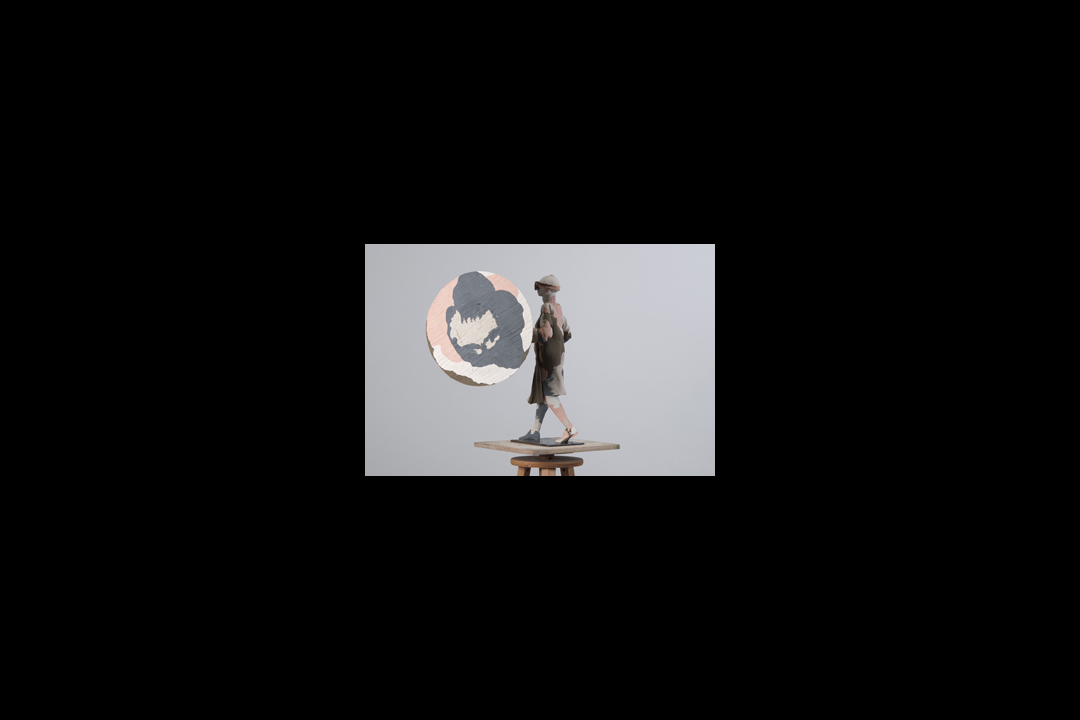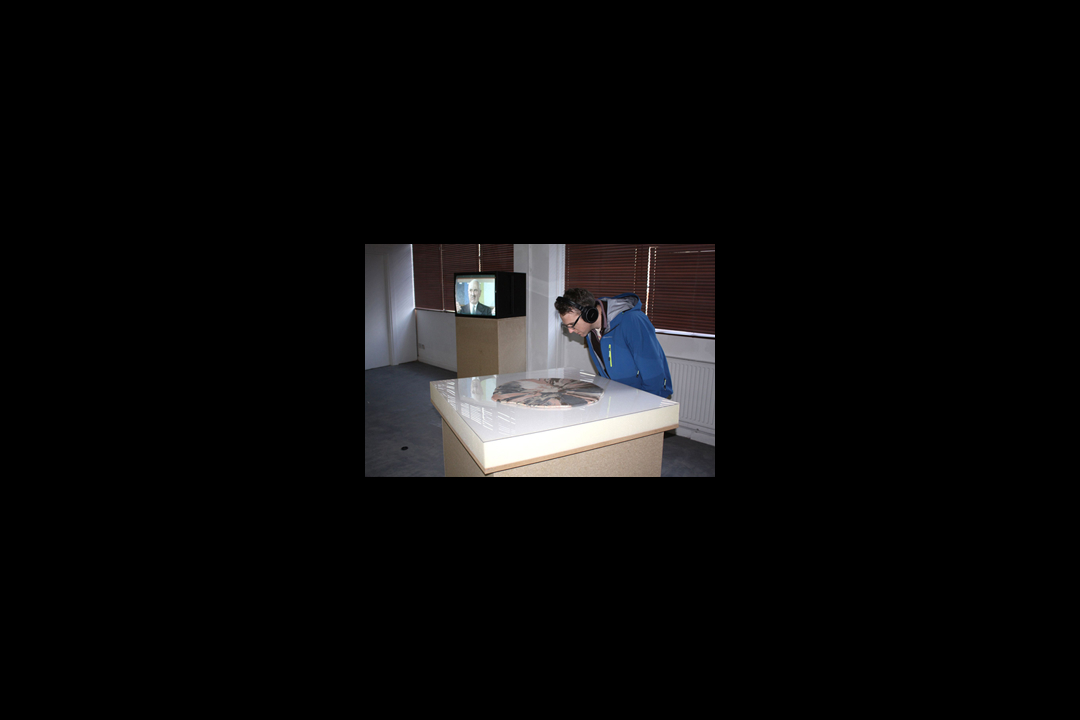Research Degree - Process made visible: in and outside the object

Research Centre
Art and Design Research Centre
Date
2012
Reading as art is a series of events as library 'occupations'
Research Degree Project
‘Process made Visible: In and Outside the Object’ ‘explores the contemporary visibility of manufacturing processes in industrially produced objects, in particular, glass. The context for the study is the well documented sense of disconnection and estrangement said to result from our unfamiliarity with making processes. The study examines ‘points of visibility’: the visual information that is available to us that attempts to describe manufacture processes, and that provides us with fragmentary insights.
At the centre of the study is ‘The Archive of Manufacture’, a collection of materials that function as ‘points of visibility’. The Archive has been especially collated for this research, and gathers together secondary sources from industry, craft, popular culture, press and media coverage, and museum collections. The Archive contains over one hundred still images, including photographs and engravings, fifteen films and animations and two objects. Within The Archive photographs make up the majority of the content – a fact that reflects both the distance (and inaccessibility) of many of the making processes depicted and the speed and ease at which this form of visibility circulates. But equally, photography is the form employed in the dominant narratives that describe our relationship with making process through the lenses of celebration or concern.
Initially The Archive is explored in relation to a wide range of theoretical debates regarding our contemporary relationship with making process. This includes exploring the recent popular fascination with making, as evidenced in recent literature and broadcasting (including Richard Sennett, Matthew Crawford), as well as descriptions of disconnection, alienation and invisibility (Karl Marx, James Heartfield, David Nye).
The study explores The Archive through three interrelated questions: Why and how is process made visible and what is understood?
- Why, examines the social, political, and economic context in order to understand key factors or ‘drivers’ which affect the visibility of process.
- How, explores the formal and material aspects of the photograph, film, or object through which process is made visible.
- What is understood - investigates how this material contributes to an understanding of making process and how it shapes our understanding of objects.
Methods of creative, visual and material interrogation from art practice are employed to make an analysis of the content of The Archive. In particular, close reading as a ‘meticulous visual analysis’ (Shepard Steiner) is developed as a key method. Whilst existing methods of close reading from photography and painting theory include the critical processes of looking and deconstruction, this study expands them to include the written form of ekphrasis, and interrogative material and visual making. These methods function as a critical form of looking to explore how examples from The Archive communicate process and how this material is understood. The resulting body of artworks includes:
- The production of a Plasticine object which is made in order to explore how ‘juncture’ - the point at which a finished product becomes separated from its making process - affects understanding and what role the visual trace of making process in the object might play in this.
- The detailed analysis of the visibility of process in a historical object, the Crown Glass disk, and the relationship of this information to contemporary perceptions of industrial glass making processes.
- Delineating an understanding, a short animated film that combines the drawings and fragments of conversation generated through a series of workshops with postgraduate fine art students. The drawings made by the student participants isolate and identify key visual components of photographs from The Archive, and along with an accompanying audio text, the film explores the contingent and fluid understanding of the photographs that emerges within the group.
Through the production of and reflection upon this body of artworks, the research explores the contingency of the fragmentary or partial descriptions of process in The Archive and the imagined or speculative understanding that results. The research identifies types of visibility in The Archive and explores their limitations, and develops four key concepts that effect visibility of process and how it is understood
- ‘Juncture’ explores how at a specific moment in an object’s manufacture the object is separated from the complexity of its making process, and examines how this technical and perceptual juncture affects the understanding of process.
- ‘Information in and outside the object’ explores the two sites where information about the object’s making process remains accessible post- juncture, and from which an understanding of the object’s making process might be ‘learned’. ‘In’ refers to the visible or tangible effects of process upon material, and ‘outside’ refers to images and film that offer glimpses of manufacturing process.
- ‘The complex interplay of information’ explores how knowledge of process (and subsequently object) is constructed through the complex interplay of accessible information located in and outside the object.
- ‘A contingent understanding’ explores how this knowledge construction results in a partial or contingent understanding of process and object, dependent on personal experience, knowledge, expertise, and encounters with different types of information.
The study makes a number of contributions to contemporary understanding of process:
It contributes discussions concerning our relationship with making and the made, expanding theories of a distanced relationship to process as developed by critics such as Marx, de Botton, Morris or Crawford by exploring the misunderstanding, myth / fantasy which results.
- The study generates novel categories for the analysis of the relationship between process and product (as listed above).
- The study uses practical, art research methods including critical material and making processes, experiments with video and sound, installation and participatory processes to explore the visible signs of process that have previously only been explored theoretically or historically.
- By using process to explore process, new understandings are surfaced. Practical making processes have illuminated the languages and limitations through which process is made visible, as well as producing an articulation of artists’ process which details how understanding is gathered and congealed.
Project Supervisors
- Becky Shaw (Director of Study)
- Penny McCarthy (Second Supervisor)
- Andrew Sneddon (Third Supervisor)
Researchers involved
Jerome Harrington - Research Degree Student
Related projects
Transmission - Transmission is a project that encompasses an annual journal, a series of...


